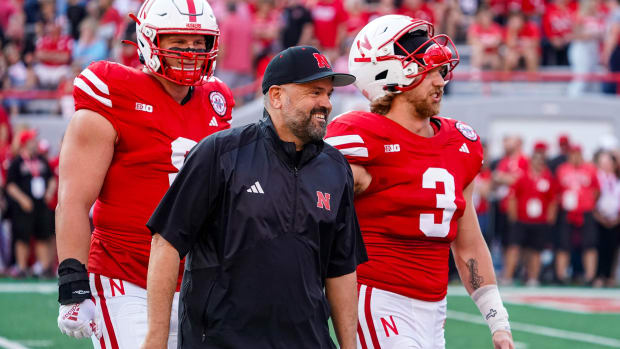
College football is a realm where tradition meets high stakes, and in recent years, the financial aspect of building a powerhouse program has skyrocketed. With increasing investments in recruiting, facilities, coaching, and branding, the question arises: What should one of the most expensive teams in college football truly look like?
From cutting-edge facilities to top-tier coaching staff and five-star athletes, here’s an in-depth look at what defines an elite, high-investment program.
The Investment in Facilities
Modern college football programs rely heavily on state-of-the-art facilities to attract recruits, maximize player performance, and build a winning culture. For an expensive team, the facilities are not just functional—they are awe-inspiring.
High-Tech Training Complexes
One hallmark of a high-cost program is an advanced training complex equipped with the latest technology:
- Biomechanics Labs: These labs use motion capture and analytics to optimize player performance and reduce injuries.
- Recovery Centers: Cryotherapy chambers, hyperbaric oxygen tanks, and hydrotherapy pools provide athletes with professional-level recovery tools.
- Virtual Reality (VR): VR setups help quarterbacks practice their reads or defensive backs visualize coverage schemes without stepping onto the field.
Stadium Experience
The stadium for such a program isn’t just a venue; it’s a spectacle:
- Luxury suites and seating for boosters and fans ensure consistent revenue.
- High-definition video boards and immersive sound systems create an electrifying atmosphere.
- Player-centric features, such as personalized locker rooms and walkways that showcase the program’s history, inspire pride.
Coaching Staff: A Brain Trust
Elite teams spare no expense in hiring the best coaching minds, from head coaches to specialized position staff. For an expensive team, the coaching structure looks like this:
Proven Head Coach
A head coach with a track record of success in the College Football Playoff (CFP) or NFL is crucial. Programs like Alabama with Nick Saban or Clemson with Dabo Swinney show that consistent leadership fosters dominance.
Specialized Assistants
Elite programs employ top-tier assistants:
- Offensive and Defensive Coordinators: Innovators who can design schemes tailored to the team’s strengths.
- Position Coaches: Experts who can refine individual skills, such as quarterback mechanics or offensive line footwork.
- Strength and Conditioning Staff: Professionals who create tailored regimens to improve athleticism and reduce injuries.
Analytical Support
A robust analytics team supports in-game decisions, player evaluation, and opponent scouting. Advanced data modeling allows the team to exploit weaknesses in opposing strategies.
Recruiting: The Best of the Best
Building a championship-caliber team begins with recruiting. For a high-investment program, this means dominating the recruiting trail year after year.
Targeting Five-Star Athletes
The cornerstone of an expensive team is consistently landing five-star athletes. These players often become game-changers, elevating the program’s performance and visibility.
Recruitment Resources
Programs with deep pockets employ strategies such as:
- Helicopter Visits: Coaches visit high school games via helicopter to show recruits they’re a priority.
- Exclusive Camps: Invite-only camps showcase a program’s resources and culture to elite prospects.
- NIL Packages: With Name, Image, and Likeness (NIL) deals now in play, high-end programs ensure players can capitalize on lucrative sponsorships.
Retention Programs
It’s not just about recruiting the best; retaining them is equally vital. Programs invest in mentoring, academic support, and team-building activities to keep players engaged.
On-Field Excellence
The hallmark of an elite program is success on the field, and for an expensive team, this includes:
- Dominant Offense: A high-octane offense that can rack up points through precision passing, explosive runs, and strategic play-calling.
- Stout Defense: A defense built to dominate opponents, featuring relentless pass rushers, versatile linebackers, and lockdown corners.
- Special Teams Prowess: Game-changing kickers, punters, and return specialists who can shift momentum in crucial moments.
Off-the-Field Branding
The most expensive programs understand the importance of building a brand that resonates far beyond the field.
National Visibility
Elite teams are constant fixtures in primetime games and bowl matchups, ensuring nationwide exposure. A robust social media presence amplifies their reach, with creative content highlighting players, coaches, and key moments.
Merchandising
High-profile programs generate significant revenue through branded merchandise. Limited-edition jerseys, unique fan gear, and exclusive collaborations keep fans engaged.
Alumni Network
A strong alumni network supports the program financially and provides players with career opportunities post-football.
The Financial Reality
Behind the glitz and glamour of an expensive team lies a financial juggernaut. Revenue streams include:
- Ticket Sales: High attendance figures drive consistent revenue.
- Television Deals: Nationally broadcast games bring lucrative TV contracts.
- Donor Contributions: Wealthy boosters fund facilities, scholarships, and operational costs.
- NIL Impact: A proactive approach to NIL ensures players benefit financially, attracting top-tier recruits.
Legacy and Expectations
The ultimate measure of an expensive program’s success is its legacy. For fans, alumni, and players, the investment is justified only when the team consistently competes for national titles.
Setting a Standard
Programs like Alabama, Georgia, and Ohio State set the benchmark for what expensive teams should achieve:
- Multiple CFP appearances and national championships.
- High NFL Draft pick rates, showcasing a pipeline to professional success.
- A culture of excellence that transcends wins and losses.
Conclusion
An expensive college football team isn’t defined solely by its budget—it’s the tangible and intangible elements that make it a powerhouse. From world-class facilities to recruiting dominance and on-field success, these programs set the standard for excellence in college athletics.
As college football continues to evolve, these programs will lead the way, showcasing what’s possible when tradition, innovation, and investment collide. For fans and players alike, they represent the pinnacle of the sport.

Leave a Reply